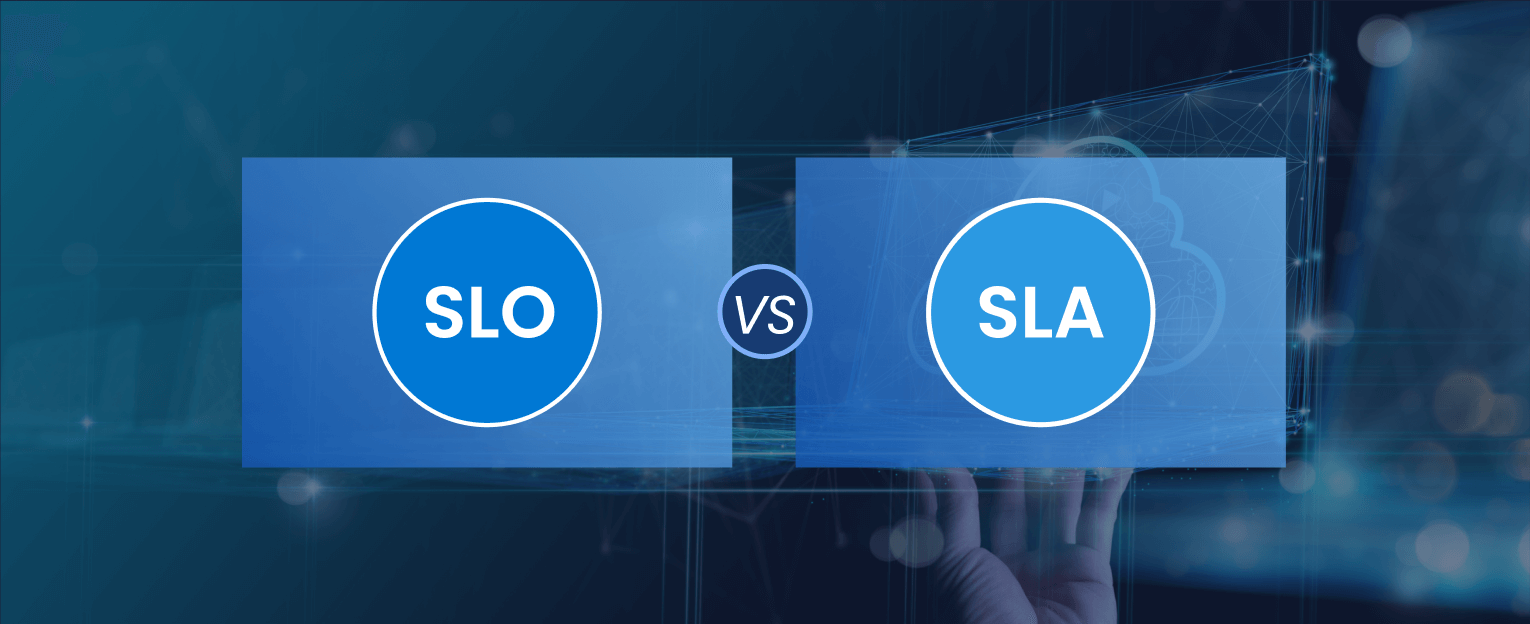Two methodologies often dominate the conversation in software development: DevOps and CI/CD. While related, these concepts serve distinct purposes, and understanding their differences is crucial for anyone aiming to optimize development workflows.
With the increasing complexity of modern software systems, developers and operations teams must adopt practices that ensure the delivery of reliable, scalable, and efficient software. This is where DevOps and CI/CD come into play. While both are often mentioned in the same breath, they serve different roles in the software development lifecycle.
DevOps fosters collaboration between development and operations teams, ensuring smooth communication and joint responsibility for the entire software lifecycle. CI/CD, on the other hand, automates the process of integrating, testing, and deploying code, making development faster and more reliable.
In this blog, we will explore the fundamental differences between DevOps and CI/CD, diving deep into their roles, shared benefits, and where they overlap.
What is DevOps?
At its core, DevOps is a cultural movement that prioritizes the integration of development and operations teams. The philosophy behind DevOps is simple: by fostering collaboration, automating processes, and focusing on continuous improvement, teams can deliver software more rapidly and with fewer errors.
Core Principles of DevOps
- Collaboration: Breaking down silos between development and operations teams.
- Automation: Automating manual tasks to reduce errors and speed up delivery.
- Continuous Improvement: Using feedback loops to refine and enhance processes consistently.
What is CI/CD?
CI/CD stands for Continuous Integration and Continuous Delivery/Deployment. It represents a series of automated steps that streamline software development, testing, and deployment. These pipelines ensure that new code changes can be integrated, tested, and delivered rapidly and reliably.
CI (Continuous Integration)
It involves regularly merging code changes into a shared repository. Automated testing is triggered with every code change to ensure code quality.
CD (Continuous Delivery/Deployment)
It extends CI by automatically delivering tested code to production or staging environments. Moreover, ensures faster and more frequent releases with minimal risk of errors.
DevOps vs CI/CD – Key Differences
Understanding the key differences between DevOps and CI/CD is crucial for optimizing your software delivery strategy. Here’s a breakdown of the most important distinctions:
1. Scope and Focus
DevOps
DevOps is broader in scope, covering the entire software development lifecycle (SDLC), including planning, coding, building, testing, deploying, operating, and monitoring. It emphasizes cultural changes in collaboration and communication between teams.
CI/CD
CI/CD is narrower in focus, explicitly targeting the automation of code integration, testing, and deployment. It’s a subset of DevOps but does not encompass the broader cultural and organizational aspects.
2. Cultural vs. Technical Aspect
DevOps
At its heart, DevOps is a cultural movement transforming how teams work together. It encourages shared responsibilities between developers and operations teams, breaking down the traditional silos in favor of better collaboration.
CI/CD
CI/CD is more of a technical practice. It emphasizes automating the software pipeline but does not focus on organizational or cultural changes.
3. Goal Orientation
DevOps
The primary goal of DevOps is to improve collaboration between teams, speed up software delivery, and create a culture of continuous feedback and improvement.
CI/CD
CI/CD’s main objective is to deliver reliable software faster, with fewer errors. It seeks to make code integration and deployment more efficient through automation.
4. Breadth of Responsibilities
DevOps
DevOps spans the entire software lifecycle, including development, operations, and post-deployment monitoring. It integrates everything from the infrastructure to the application code, with teams responsible for development and system reliability.
CI/CD
CI/CD deals explicitly with the code pipeline—from integrating new code changes to testing and delivering them into production.
5. Process vs. Pipeline
DevOps
DevOps is about process management. It focuses on the full development lifecycle and brings together teams to work seamlessly across stages.
CI/CD
CI/CD is a pipeline management system. It automates specific steps within the broader DevOps process, particularly the build, test, and deployment stages.
6. Human vs. Automation
DevOps
In DevOps, the emphasis is on human collaboration—how teams interact, communicate, and share responsibilities.
CI/CD
CI/CD is focused almost entirely on automation. The goal is to automate repetitive tasks like testing and deployment to reduce human error.
7. Timeframe and Scope of Implementation
DevOps
Implementing DevOps involves significant cultural changes and can take time to integrate into an organization’s workflow fully.
CI/CD
CI/CD implementation is more straightforward and technical. Once the right tools are in place, pipelines can be set up relatively quickly to automate code testing and delivery.
8. Feedback Loops
DevOps
DevOps emphasizes continuous feedback across all stages of development and operations. Monitoring tools and real-time data are key to this feedback loop.
CI/CD
CI/CD’s feedback loop is more narrowly focused on the testing and deployment stages. Automated tests and deployment metrics ensure issues are caught early and fixed before the code reaches production.
9. Metrics and KPIs
DevOps
Common metrics for DevOps include deployment frequency, mean time to recovery (MTTR), and lead time for changes. These metrics provide insights into how quickly and reliably software can be delivered and how well teams collaborate.
CI/CD
For CI/CD, metrics like build success rate, test coverage, and deployment success rate are critical. These metrics ensure that the automation pipeline is working efficiently and effectively.
10. Tooling
DevOps
DevOps relies on a wide range of tools that support collaboration, automation, and monitoring. Tools like Docker, Kubernetes, and Terraform are commonly used to automate infrastructure and manage deployments.
CI/CD
CI/CD pipelines leverage specific tools designed for automated integration, testing, and deployment. Popular CI/CD tools include Jenkins, GitLab CI, Travis CI, CircleCI, and Bamboo.
Benefits of DevOps vs CI/CD
While DevOps and CI/CD serve different purposes, both offer significant benefits that can transform software development processes.
Benefits of DevOps
Enhanced Collaboration Between Teams
DevOps fosters a culture of collaboration by breaking down the traditional silos between development and operations teams. This shift in mindset encourages a shared responsibility for the entire software development lifecycle, from coding to deployment and beyond.
Faster Delivery of Software and Updates
One of the core advantages of DevOps is the acceleration of the software delivery pipeline. By automating processes and implementing continuous feedback loops, teams can quickly identify and resolve issues. Automated testing and deployment pipelines reduce the time spent on manual tasks, allowing developers to release updates and new features more frequently.
Improved Efficiency and Reduced Manual Intervention
DevOps emphasizes the use of automation tools to eliminate repetitive, manual tasks. By automating processes like code testing, integration, and deployment, teams can significantly reduce the risk of human error. This leads to greater operational efficiency and frees up team members to focus on high-value tasks such as feature development, problem-solving, and strategic planning.
Focus on Continuous Improvement and Feedback
A key principle of DevOps is the focus on continuous improvement, facilitated by real-time feedback loops. Automated monitoring systems provide immediate insights into system performance, allowing teams to detect and address issues as they arise.
Increased Scalability and Reliability of Systems
DevOps practices like Infrastructure as Code (IaC) and automated monitoring help systems scale easily and remain reliable under changing conditions. Automated monitoring further enhances reliability by identifying potential issues before they become critical, ensuring systems remain stable even as the organization grows or user demands increase.
Better Alignment with Business Objectives
DevOps bridges the gap between business and technical teams by integrating feedback from operations directly into the development process. This ensures that software development is aligned with the company’s strategic goals.
The continuous delivery of features and updates allows organizations to respond to market demands quickly, ensuring that products are developed and enhanced in line with customer needs and business objectives.
Reduced Downtime and Faster Recovery
Automated monitoring and recovery mechanisms in DevOps help minimize downtime and ensure fast recovery from incidents. If an issue arises in production, automated alerts are triggered, allowing teams to address the problem immediately.
Benefits of CI/CD:
Automated Testing for Faster Bug Detection
CI/CD pipelines integrate automated testing at every stage of the development process, allowing teams to detect bugs earlier. Each time new code is committed, automated tests run to verify that it doesn’t introduce new issues. This early bug detection reduces the risk of defects being deployed to production and ensures that any problems are caught and resolved before they escalate, leading to higher-quality software.
Reduced Manual Errors Through Automation
Automation is at the heart of CI/CD processes, significantly reducing the likelihood of manual errors that can occur during code integration, testing, and deployment. Automated pipelines handle tasks such as code merging, running tests, and deploying to production environments.
Continuous Integration for Deployable Code
Continuous Integration (CI) ensures that developers integrate their code changes into a shared repository frequently. Automated tests run on every change, ensuring that the codebase is always in a deployable state. This practice allows teams to catch and fix integration issues early, avoiding last-minute scrambles and the dreaded “integration hell” that can occur when code is merged less frequently. The result is a more stable and reliable codebase.
Faster Time to Market with Frequent Releases
CI/CD pipelines enable faster time to market by automating the entire process of testing, integration, and deployment. Teams can release new features, bug fixes, and improvements to users more frequently without compromising quality. This rapid release cycle allows businesses to respond quickly to market changes, customer feedback, and emerging opportunities, giving them a competitive edge in today’s fast-paced digital landscape.
Improved Code Quality Through Continuous Feedback
The continuous feedback loop in CI/CD ensures that developers receive real-time insights into the performance and quality of their code. Automated testing, coupled with detailed reports, helps identify issues and improvements early in the development process.
Streamlined Deployment with Continuous Delivery/Deployment
Continuous Delivery (CD) ensures that code changes are automatically deployed to staging or production environments once they pass the required tests. This streamlined deployment process minimizes the risk of deployment failures and reduces the time spent manually moving code through different environments.
Increased Developer Productivity Through Automation
By automating repetitive tasks such as testing, integration, and deployment, CI/CD frees developers from time-consuming manual processes. This allows them to focus on writing code, solving complex problems, and developing new features.
The result is a more productive and satisfied development team, which can focus on delivering value to the business and improving the overall quality of the software.
FAQs
Is CI/CD the same as DevOps?
No, CI/CD is a subset of DevOps. While DevOps encompasses culture, collaboration, and the entire SDLC, CI/CD focuses on automating the build, test, and deploy stages.
What is the role of CI/CD in DevOps?
CI/CD automates code integration, testing, and deployment, which is crucial for the smooth operation of a DevOps environment.
What is the difference between DevSecOps and CI/CD?
DevSecOps incorporates security practices into DevOps processes, while CI/CD specifically automates code integration and deployment pipelines.
Final Words
While DevOps vs CI/CD serve different roles in modern software development, they are complementary. DevOps provides the cultural framework, while CI/CD delivers the automation that speeds up the development pipeline. These practices enable faster, more reliable software delivery when used together, making them essential for any modern development team.
Fortunately, Folio3 Cloud Services can help you getting started with DevOps, CI/CD, or both and help you in adopting these practices to lead to more efficient workflows, better collaboration, and faster releases.














